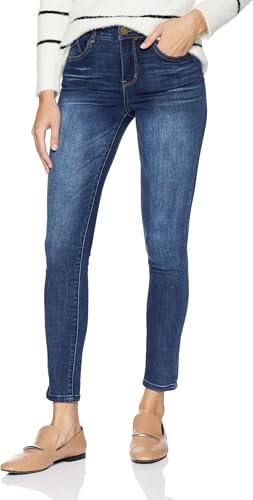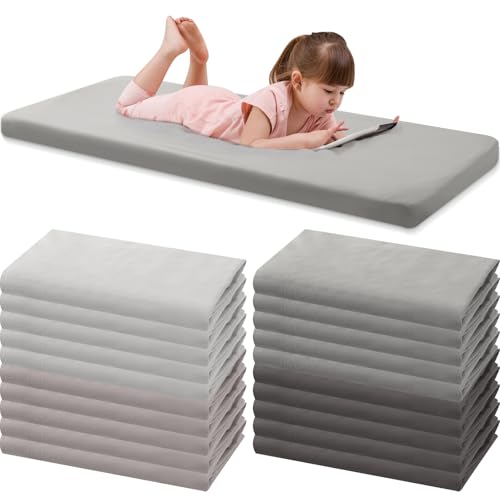
A pitching wedge is an essential club in a golfer’s bag for approach shots to the green. But have you ever wondered how many degrees is a standard pitching wedge?
A standard pitching wedge typically has a loft angle of around 45 to 48 degrees. However, it is important to note that the loft angle may vary slightly depending on the brand and model of the club.
The loft angle of a pitching wedge is designed to provide the golfer with a good balance between distance and control. The higher loft angle allows for a higher trajectory, making it easier to stop the ball on the green. Additionally, the loft angle helps to generate backspin, which can help control the ball’s flight and landing.
It’s worth mentioning that the loft angle of a pitching wedge is just one aspect to consider when choosing the right club for your game. Factors such as swing speed, skill level, and personal preference should also be taken into account.
What is a Standard Pitching Wedge?
A pitching wedge is an important club in a golfer’s bag. It is typically used for approach shots and getting the ball close to the green. The loft of a standard pitching wedge can vary depending on the manufacturer and model, but it is typically between 44 and 48 degrees.
The pitching wedge is one of the most versatile clubs in a golfer’s arsenal. With its lofted face, it allows players to hit high shots with a significant amount of spin. This makes it ideal for short shots around the green, where accuracy and control are crucial.
Although the loft of a pitching wedge can vary, most golfers carry a club with a loft of around 46 degrees. This loft provides a good balance between distance and control, allowing golfers to hit the ball with enough height and spin to stop it quickly on the green.
The Role of the Pitching Wedge
The pitching wedge is typically the club of choice for approach shots from distances of around 100 to 150 yards. It is designed to hit the ball high in the air and generate a moderate amount of backspin, allowing the ball to stop quickly on the green. Golfers can also use the pitching wedge for chip shots around the green, as its lofted face helps get the ball over obstacles and land softly on the putting surface.
Understanding Loft
Loft is an important factor to consider when selecting a pitching wedge. A higher loft produces a higher trajectory and more spin, while a lower loft results in a lower trajectory and less spin. The choice of loft depends on the golfer’s playing style and the conditions on the course.
| Club | Loft (degrees) |
|---|---|
| Pitching Wedge | 44-48 |
| Sand Wedge | 54-58 |
| Lob Wedge | around 60 |
It’s important for golfers to experiment with different lofts to find the one that suits their game best. Some golfers may prefer a pitching wedge with a higher loft for added control and stopping power, while others may opt for a lower loft to achieve more distance.
Understanding the Basics
When it comes to the game of golf, understanding the basics is essential. One fundamental aspect of golf is understanding the different types of clubs and their uses. One club that is commonly used in golf is the pitching wedge. The pitching wedge is a versatile club that comes in handy in various situations on the golf course.
The Purpose of a Pitching Wedge
The pitching wedge is a type of iron club that is designed to help golfers make short, high shots. It is primarily used for approach shots onto the green, as well as shots from the rough or sand bunkers. The pitching wedge is known for its lofted face, which helps the golf ball get airborne quickly.
The Loft Angle
Every club in a golfer’s bag has a different loft angle, including the pitching wedge. The loft angle refers to the angle between the clubface and the vertical plane. In the case of a pitching wedge, the loft angle typically ranges between 44 and 48 degrees. This loft angle helps create a high trajectory, making it easier for the golf ball to stop on the green.
It’s important to note that the loft angle of a pitching wedge can vary depending on the manufacturer and the model of the club. Golfers should always check their individual clubs to know the exact loft angle.
Understanding the basics of the pitching wedge, including its purpose and loft angle, is essential for golfers of all skill levels. With this knowledge, golfers can make informed decisions on the golf course and improve their overall game.
Typical Loft Angles
Loft angle refers to the angle formed between the clubface and the ground. It is an important factor in determining the trajectory and distance of a golf shot. Most golf clubs, including pitching wedges, have a specific loft angle that is considered standard.
When it comes to pitching wedges, the loft angle often varies depending on the brand and model. However, a standard pitching wedge typically has a loft angle between 44 and 48 degrees.
It’s important to note that these are general guidelines and loft angles can vary among different club manufacturers. Some brands may offer pitching wedges with lower loft angles, while others may have higher loft angles. Golfers should consult the specifications provided by the manufacturer to determine the loft angle of their specific pitching wedge.
Effect on Shot Distance
The loft angle of a pitching wedge plays a crucial role in shot distance. Generally, the higher the loft angle, the higher the ball will launch and the shorter the shot distance will be. On the other hand, a lower loft angle will result in a lower launch angle and a longer shot distance.
It’s important for golfers to understand the loft of their pitching wedge as it can help them determine the appropriate club selection for different shot distances on the course. A higher lofted pitching wedge may be used for shorter approach shots, while a lower lofted pitching wedge may be used for longer approach shots.
Comparing Loft Angles of Other Clubs
In comparison to other golf clubs, pitching wedges typically have a higher loft angle than long irons but a lower loft angle than sand wedges or lob wedges. This makes the pitching wedge a versatile club that can be used for a variety of shots around the green.
| Club | Typical Loft Angle |
|---|---|
| Pitching Wedge | 44-48 degrees |
| 9 Iron | 40-44 degrees |
| 8 Iron | 36-40 degrees |
| 7 Iron | 32-36 degrees |
| 6 Iron | 28-32 degrees |
| Sand Wedge | 54-58 degrees |
| Lob Wedge | 58-62 degrees |
Understanding the loft angles of different clubs can help golfers make better decisions on the course and improve their overall game. It allows them to select the appropriate club for the desired shot and achieve optimal results.
Factors Affecting the Degree Measurement
The degree measurement of a standard pitching wedge can be affected by several factors. These factors include:
| Factor | Description |
|---|---|
| Golf Club Brand | Different golf club brands may have slightly different measurements for their pitching wedges. It is important to consult the manufacturer’s specifications to know the exact degree measurement of a specific pitching wedge. |
| Design and Technology | The design and technology used in the construction of a pitching wedge can also affect its degree measurement. Certain design features or technologies may alter the loft angle, resulting in variations in the degree measurement. |
| Club Model | Even within the same brand, different club models may have different degrees of loft for their pitching wedges. This can be attributed to variations in club design, materials used, or intended target audience. |
| Manufacturing Tolerances | Manufacturing processes may have tolerances that can lead to slight variations in the degree measurement of pitching wedges. These tolerances can be influenced by factors such as the skill of the craftsman, quality control procedures, and materials used. |
| Individual Swing Characteristics | Lastly, individual swing characteristics can also affect the effective degree measurement of a pitching wedge. Factors such as swing speed, angle of attack, and contact point on the clubface can influence the loft and trajectory of the ball, ultimately affecting the perceived degree measurement. |
Considering these factors, it is crucial for golfers to accurately determine the degree measurement of their pitching wedge to make informed decisions on club selection and shot execution.






